Top 15 Instagram Mistakes Small Businesses Should Avoid (and How to Fix Them)
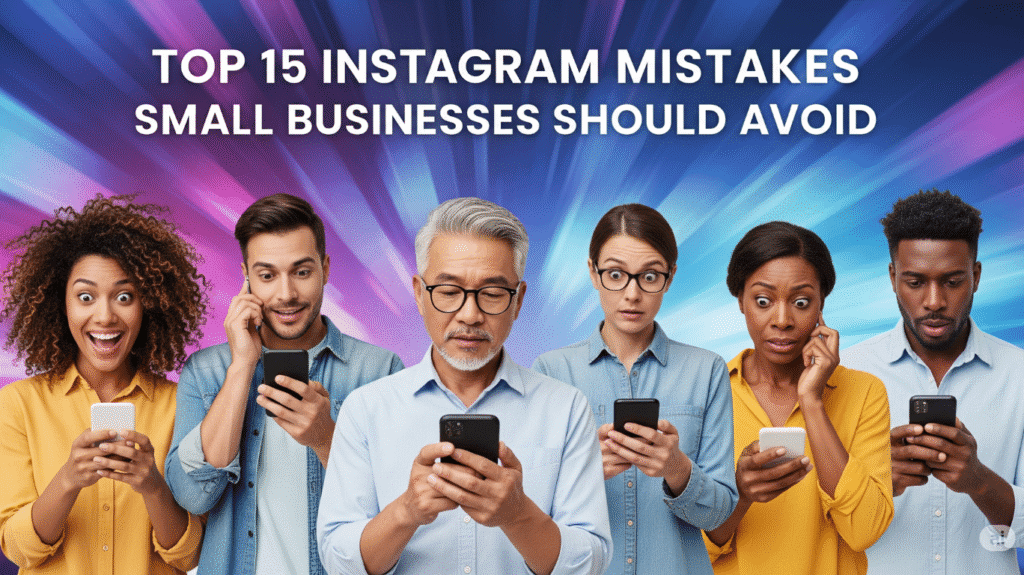
Is your small business struggling to gain traction on Instagram, despite your best efforts? In today’s hyper-visual digital landscape, Instagram has evolved far beyond a simple photo-sharing app; it’s a dynamic hub where millions of small businesses connect with customers, amplify brand awareness, and drive significant sales. Yet, many businesses fall short of their full potential due to a handful of common, yet critical, missteps. In 2025, these Instagram mistakes aren’t just minor setbacks—they’re major roadblocks to your growth. You’ve come to the perfect spot if you’re prepared to improve your Instagram marketing strategy and avoid these hidden traps.
Ignoring a Clear Instagram Strategy
Many small businesses create an Instagram account without a well-thought-out plan. They believe simply uploading posts is sufficient. However, without a clear Instagram strategy, your content can become disjointed and misaligned with your business goals. A strategy should include your target audience, content themes, posting frequency, and engagement goals. Without it, you’re essentially shooting in the dark.
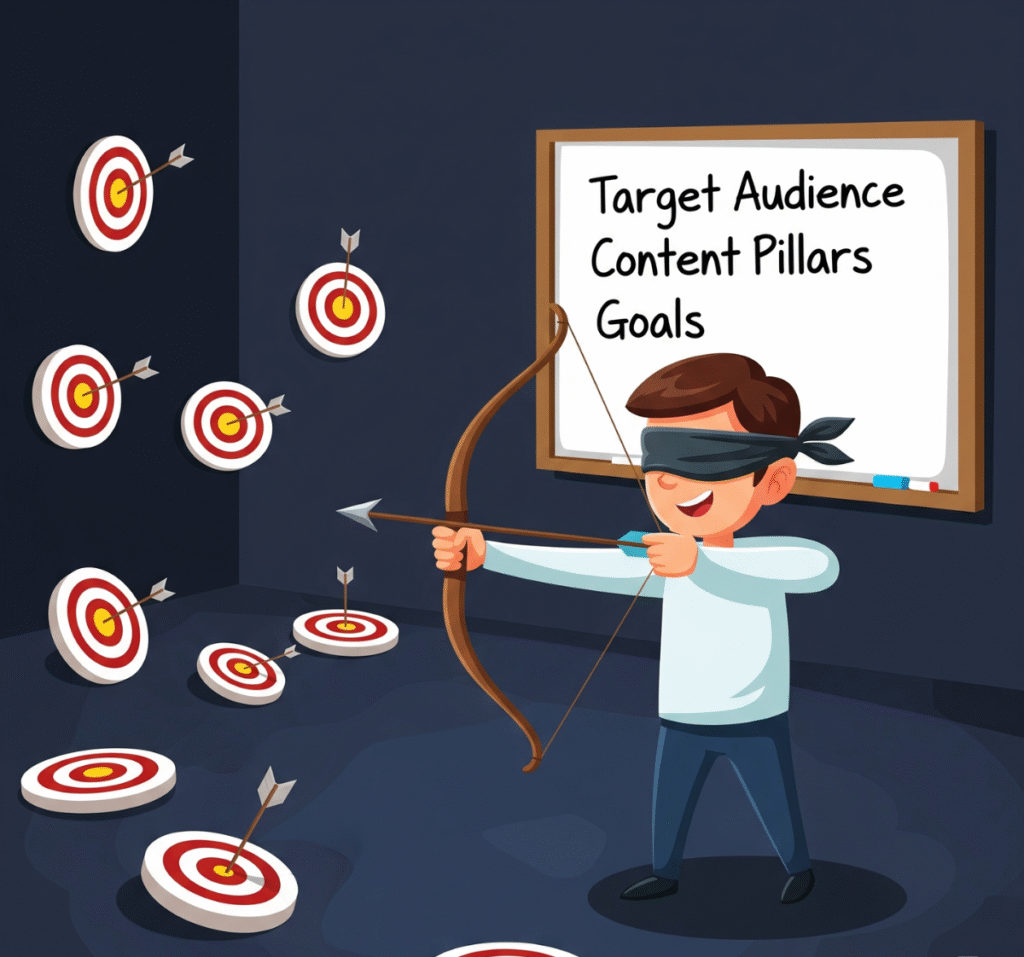
Example:
Imagine a boutique with no strategy. Sometimes they post only pictures of dresses, other times generic images of their shop, and occasionally photos from a random event. Their branding is inconsistent, and their followers are confused about what to expect from their page. The result? Low engagement and no increase in sales. In contrast, The Business Woman Media (a content creation agency) consistently emphasizes developing a coherent branding and audience-specific content strategy for their clients, which leads to better outreach and engagement.
Solution:
To develop a robust Instagram marketing plan, follow these steps:
- Define Your Objective: What do you want to achieve with Instagram? Brand awareness? Sales? Website traffic?
- Identify Your Target Audience: Who are you targeting? What are their preferences, dislikes, and online behavior?
- Define Content Pillars: What topics will you create content around that are relevant to your brand and audience?
- Competitor Analysis: Look at your competitors, such as viidigital.com(a digital marketing agency) and ghanayellowpages.com (a business directory), to see what they’re doing right and where there’s room for improvement. Learn from their strategies.
- Set KPIs (Key Performance Indicators): How will you measure your success?
Inconsistent Branding
Your brand’s online shop is your Instagram feed. If its colors, tone, and messaging are inconsistent, customers can become confused and lose trust in your brand. Consistent branding means every post, story, and reel reflects your brand’s identity – through its colors, fonts, logo, and messaging. This is a common Instagram mistake small businesses make that impacts brand perception.
Example:
A bakery that sometimes uses bright and playful visuals and then posts dark and serious images the next day will confuse its customers. A consistent brand, such as Food & Wine or Vanity Fair, on the other hand, keeps a high level of visual and aesthetic consistency, which improves brand identification. If you look at businesses listed on ghanayellowpages.com, those with consistent visual identities appear more professional and trustworthy.
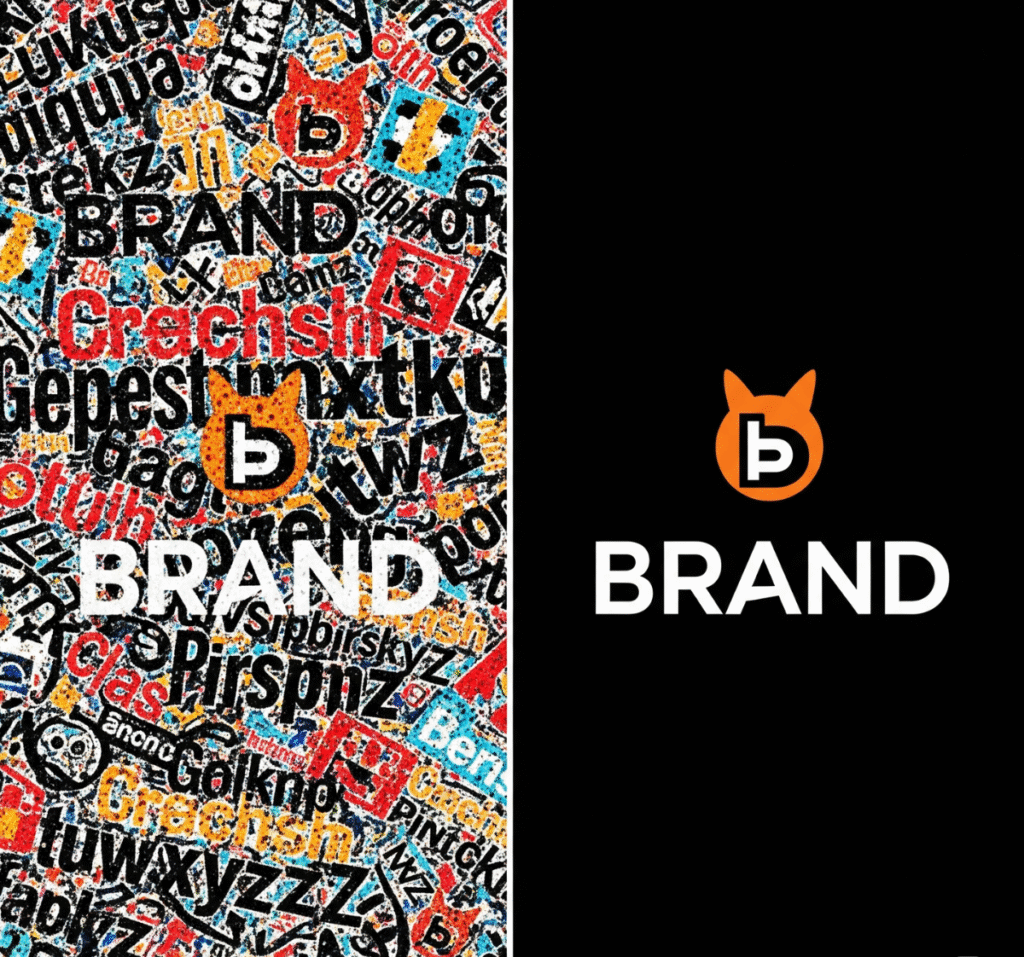
Solution:
To maintain brand consistency:
- Create Brand Guidelines: Define your brand colors, fonts, logo usage, and image style.
- Use Filters and Presets: Apply consistent filters and presets to your photos to maintain a uniform look.
- Develop a Content Calendar: Planning helps you maintain a consistent theme and messaging.
- Keep Bio and Profile Picture Consistent: Your profile picture and bio should accurately represent your brand.
- Quick Takeaway: Consistency builds recognition; recognition builds trust.
Neglecting Instagram Stories and Reels
Example:
A small coffee shop that only posts static pictures of its menu, while its competitors are showcasing live coffee making in Stories or creating fun barista videos on Reels. Clearly, the latter will garner more engagement. Agencies like viidigital.com advise their clients to focus on Stories and Reels because their reach and engagement are often much higher than static posts.
Solution:
To create engaging Stories and Reels content:
- Show Behind-the-Scenes: Share the story behind your business, product creation, or introduce your team.
- Use Polls, Quizzes, and Q&A: Utilize interactive features to boost audience engagement.
- Follow Trends: Incorporate viral trends from Reels and adapt them to suit your brand.
- Product Demos and Tutorials: Showcase how to use your products or services.
Overusing or Misusing Hashtags
Hashtags make content discoverable, but their incorrect use can make your content appear spammy and reduce reach. Hashtag stuffing (using too many hashtags) or irrelevant hashtags can confuse the Instagram algorithm and might even lead to penalties. This is a common social media mistake that hinders visibility.
Example:
A clothing store that uses 30+ hashtags in every post, including irrelevant tags like #foodie or #travel. Such posts appear spammy and fail to attract the right audience. Resources like The Small Business Site and Brown Creative emphasize a sound hashtag strategy focusing on relevancy and quality over quantity.
Solution:
For effective hashtag usage:
- Relevance: Only use hashtags that are relevant to your content and brand.
- Mix of Hashtags: Use a mix of popular, niche-specific, and branded hashtags.
- Quantity: 5 to 10 relevant hashtags are often sufficient, but you can go up to 20 if they are all pertinent.
- Hashtag Research: Use the Instagram search bar and other tools to find relevant and high-performing hashtags.
- Quick Takeaway: Quality over quantity always wins with hashtags.
Posting Irregularly or Too Frequently
Maintaining a balanced posting schedule is crucial. Too few posts can make you disappear from your audience’s radar, while too many can bore them or compel them to unfollow you. The Instagram algorithm favors consistent posters, but “consistent” doesn’t mean “every hour.” This is a significant mistake small businesses often make that impacts audience retention.
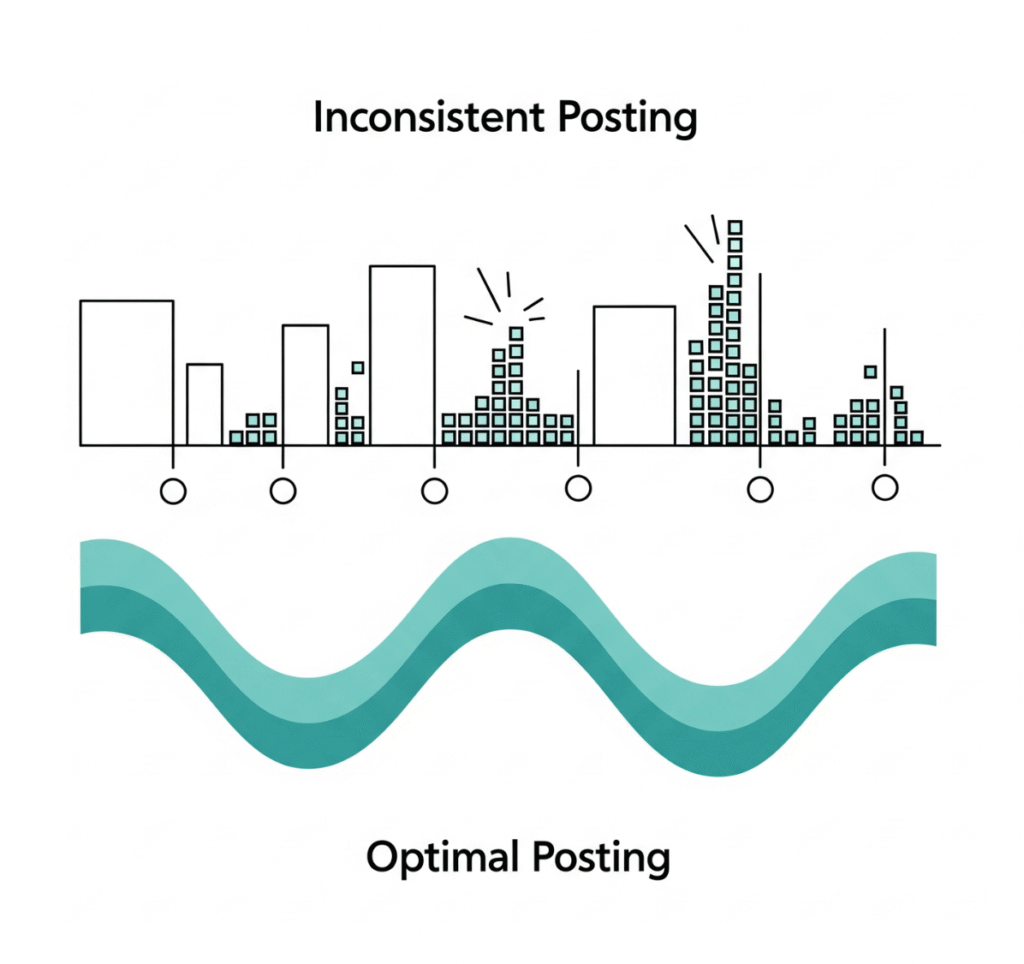
Example:
A restaurant that posts only once a month will likely be forgotten by its customers. Similarly, a business that posts 5 times a day will clutter its followers’ feeds and irritate them. Social media management firms like Agency Vista and 20four7VA advocate for consistent and optimized posting schedules.
Solution:
Recommendations for optimal posting frequency:
- The Key Is Consistency: Make a timetable and follow it. Daily posts or 3-4 posts a week might be sufficient, depending on your business and audience.
- Audience Insights: Check your Instagram Analytics to see when your followers are online and when engagement is highest.
- Content Quality: Focus on quality over quantity. Fewer high-quality articles are preferable to numerous low-quality ones.
Ignoring Audience Engagement
Instagram is a social media site, and the word “social” suggests communication. Simply posting content isn’t enough. Responding to your followers’ comments, replying to their DMs, and reacting to their Stories is vital. Ignoring Instagram engagement can make your followers feel disconnected and decrease their loyalty.
Example:
An e-commerce store whose customers ask questions in comments but receive no replies. In such cases, customers feel their concerns are not valued, and they might turn to other brands. Brown Creative and DailyStory are agencies that focus on interactive strategies to boost client engagement.
Solution:
Strategies for timely and meaningful audience interaction:
- Reply to Comments: Respond to every comment, even if it’s just a simple “thank you.”
- Respond to Direct Messages: Verify and quickly respond to direct messages.
- Respond to User-Generated Content: If someone tags you or posts about your product, react to it or share their post (with permission).
- Live Sessions: Use Instagram Live for Q&A sessions or product demonstrations.
- Quick Takeaway: Engagement is a two-way street; actively participate in conversations.
Neglecting Analytics and Insights
Instagram Insights provides valuable data about your performance – who is viewing your posts, when, and which content receives the most engagement. If you ignore this data, you won’t know what’s working and what isn’t, potentially hindering your growth. This is a crucial Instagram growth hack that provides valuable insights.
Example:
A startup that keeps posting but never checks Insights. They don’t know which region their followers are from, their age group, or which posts they prefer. The result? Their content remains generic and ineffective. Brown Creative and The Sun are media companies that emphasize data-driven strategies.
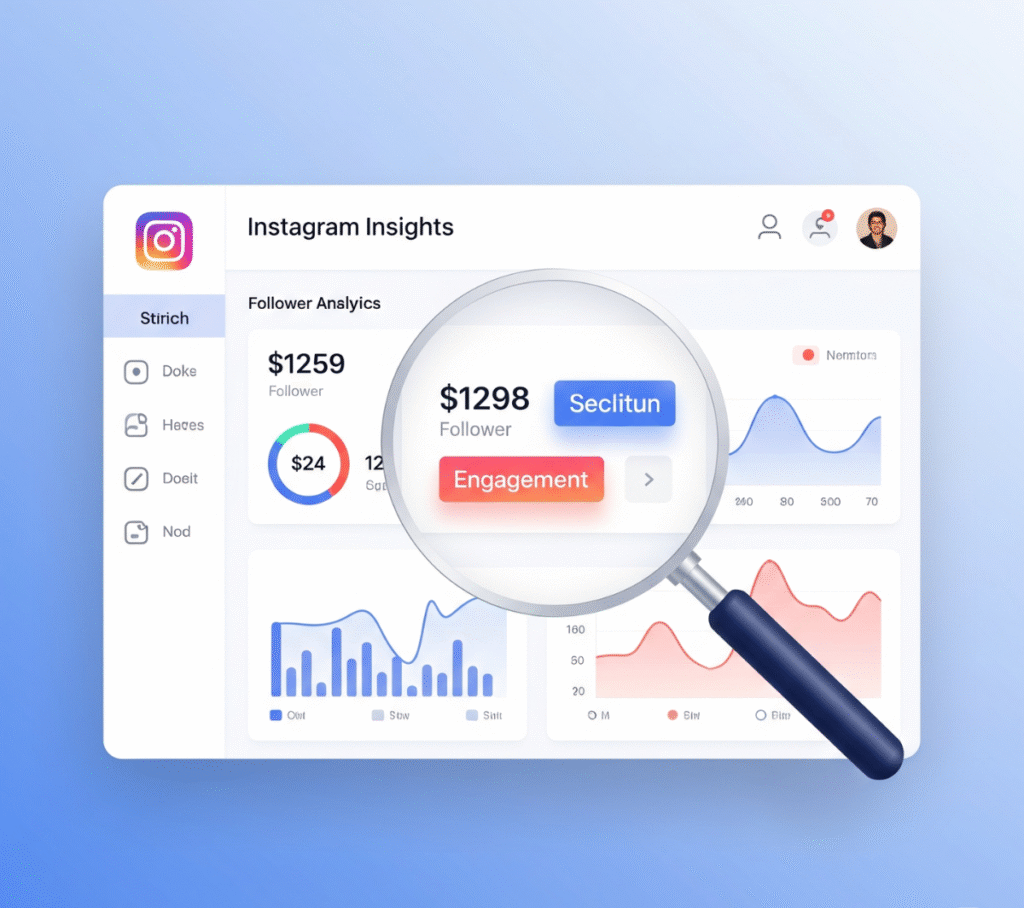
Solution:
Tools and methods to track and interpret Instagram analytics:
- Instagram Insights: Regularly check the built-in Insights tool on your business profile.
- Focus on Key Metrics: Monitor metrics such as reach, impressions, engagement rate, follower growth, and website clicks.
- Analyze Content Performance: See which posts and Stories are generating the most engagement.
- Understand Audience Demographics: Understand your audience’s demographics (age, gender, location).
- Adjust Strategy: Adjust your content strategy based on the data.
Poor Visual Content Quality
Instagram is a visual platform. Low-quality images or videos can severely impact your brand’s perception. Pixelated photos, poor lighting, or unprofessional visuals can make your business appear unprofessional. Customers expect high-quality content. This is a common mistake that directly affects their brand image.
Example:
A jewelry shop that posts blurry and poorly lit pictures of its products. This prevents customers from seeing the true beauty of the products, potentially deterring purchases. The Business Woman Media and DailyStory highlight the importance of high-quality
Solution:
Tips for creating visually appealing posts:
- High-Resolution Images/Videos: Always use high-resolution content.
- Good Lighting: Use natural lighting or invest in lighting equipment.
- Aesthetics: Maintain a consistent visual style according to your brand aesthetics.
- Editing Tools: Use photo editing apps (like Canva, Adobe Lightroom) to make your images look professional.
- Video Quality: For videos, ensure stable footage and clear audio.
- Quick Takeaway: Make an impression with your images since they are the first people see your brand.
Over-Promotion Without Value
If you constantly promote only products or services in every post, your followers will get bored and unfollow you. Instagram isn’t just a sales platform; it’s also a platform for providing value and building a community. People might feel like they are just a “money machine” for you.
Example:
A clothing brand that only posts “Buy now!”, “Sale!”, “Shop here!” Such posts lead to user fatigue. Brown Creative emphasizes a value-driven approach in content marketing.
Solution:
Balancing promotional posts with valuable content:
- 80/20 Rule: 80% of your content should be value-driven (informative, entertaining, inspiring), and 20% promotional.
- Behind-the-Scenes: Share the story of your business, your team, or your product development process.
- Tips and Tutorials: Share tips or tutorials related to your product or service.
- User-Generated Content: Share customer posts where they are using your product.
- Interactive Content: Engage your audience through polls, quizzes, and Q&A sessions.
Not Utilizing Instagram's Full Features
Instagram regularly introduces new features, such as Shopping, Guides, Live Rooms, Reels, and new Stickers. Many small businesses ignore these features, even though they offer excellent opportunities to increase your reach and engagement. Failing to use these features can leave you behind your competitors. This is a common Instagram mistake make, missing out on powerful tools.
Example:
An online boutique that doesn’t enable the Instagram Shopping feature, requiring customers to manually navigate to their website to purchase products. This friction can deter customers. In contrast, businesses that utilize Instagram Shopping find it easier to generate direct sales.
Solution:
Encouragement to explore and integrate various Instagram features:
- Instagram Shopping: If you sell physical products, set up Instagram Shopping so people can purchase directly from the app.
- Guides: Use Guides to create informative content, product recommendations, or city guides.
- Collaborative Posts (Collabs): Collaborate with other businesses or influencers to expand reach to both audiences.
- Instagram Live: Hold workshops, interviews, or Q&A sessions with Live. For a deeper dive into these features, consider [How Instagram and TikTok Live Help Businesses Grow]
- Saved Replies: Use Saved Replies to quickly answer common customer questions.
- Quick Takeaway: Explore Instagram’s features; they’re designed to help your business grow.
Ignoring User-Generated Content (UGC)
User-Generated Content (UGC) is content created by your customers or fans about your brand. This could be reviews, photos, or videos. Because it seems genuine and reliable, user-generated content (UGC) has enormous power. Ignoring it can deprive you of excellent opportunities for community building and social proof.
Example:
A restaurant that never shares its customers’ posts, even if they are pictures of their food. This can lead to decreased customer engagement, making them feel unappreciated. Conversely, brands like Food & Wine and Vanity Fair often share user-generated content, which strengthens their community.
Solution:
Ways to encourage and showcase UGC:
- Request UGC: Encourage your customers to create posts about your products or services and tag you.
- Create a Hashtag: Develop a unique branded hashtag and ask customers to use it.
- Share UGC: With customers’ permission, share their posts on your feed or Stories.
- Contests and Giveaways: Organize UGC-based contests.
- Testimonials: Share customer reviews and testimonials in post format.
Lack of Clear Call-to-Actions (CTAs)
Your content isn’t just for viewing; it should lead to a purpose. If you don’t include clear Call-to-Actions (CTAs) in your posts, your followers won’t know what to do next. Missed CTAs mean missed opportunities – whether it’s a website visit, a purchase, or a newsletter subscription.
Example:
A fitness trainer who shares workout videos but never tells people how to join their sessions or visit their website. The result? Viewers just watch the videos but take no action.
Solution:
Crafting effective and compelling CTAs:
- Clear and Concise: CTAs should be clear and immediately understandable. For example, “Shop Now,” “Learn More,” “Sign Up,” “Link in Bio.”
- Action-Oriented Verbs: Use verbs that prompt action.
- Placement: Place CTAs at the beginning or end of your caption, or use interactive stickers in Stories (like the Link sticker).
- Urgency/Scarcity: Occasionally use phrases like “Limited-time offer!” or “Only a few left!” (if applicable).
- One CTA Per Post: Provide only one clear CTA per post to avoid confusion.
- Quick Takeaway: Guide your audience; tell them exactly what you want them to do next.
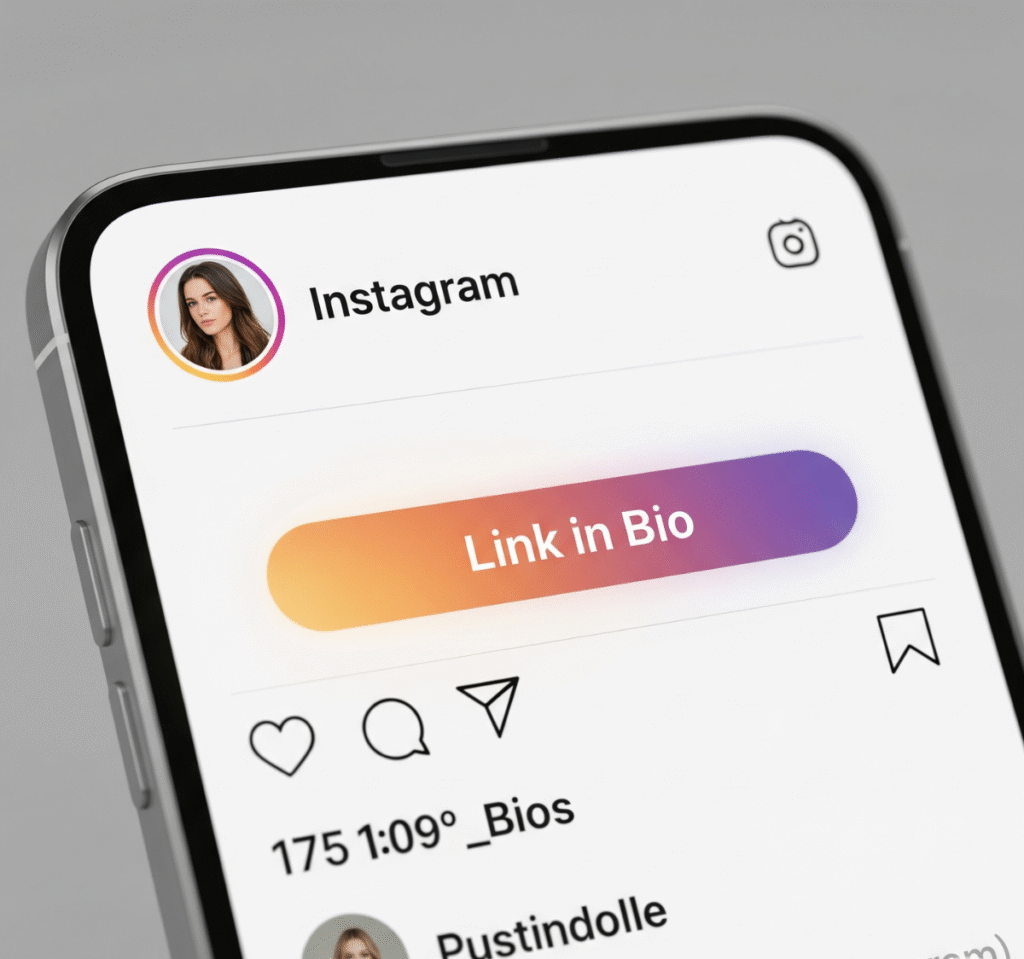
Not Collaborating with Influencers Wisely
Influencer marketing can be very beneficial for small businesses, but partnering with the wrong influencer can harm your brand’s reputation and waste your money. The influencer’s audience should match your target audience, and their engagement should be authentic.
Example:
A skincare brand that collaborates with an influencer whose audience is primarily interested in gaming. This partnership will yield no benefit because the audience isn’t relevant. Similarly, an influencer whose engagement is based on fake followers or bots will also be detrimental to your brand.
Solution:
Criteria for selecting suitable influencers:
- Relevance: The influencer’s niche should be relevant to your brand.
- Audience Demographics: The influencer’s audience should match your target audience.
- Engagement Rate: Look at the engagement rate rather than just the number of likes and comments. Engagement rates for fake followers are frequently extremely low.
- Authenticity: The influencer’s engagement should be authentic – comments should be meaningful, not generic.
- Brand Values: The ideals of your brand and the influencer should coincide.
- Past Collaborations: Examine the influencer’s prior partnerships and their results
Ignoring Negative Feedback or Comments
Every business receives negative feedback at some point. Ignoring or deleting it can severely damage your brand image. Handling negative feedback correctly can boost your brand’s credibility and show customers that you care about their concerns.
Example:
A restaurant whose page receives a comment about poor service, and the restaurant deletes or ignores it. Other customers will see this and perceive the restaurant as trying to hide its mistakes. The Small Business Site and Brown Creative provide articles on crisis management and customer relations.
Solution:
Approaches to handle negative comments constructively:
- Prompt Response: Respond as quickly as possible.
- Empathy: Understand the customer’s complaint and express sympathy.
- Apologize (If Applicable): Apologize if it’s your mistake.
- Offer Solution: Propose a solution to the problem or offer to discuss it offline.
- Respond Publicly, Resolve Privately: Provide an initial response publicly, but resolve the full issue through private messages or email.
- Professionalism: Always maintain a professional tone, no matter how angry the customer may be.
- Quick Takeaway: View negative feedback as an opportunity to show your commitment to customer satisfaction.
Not Staying Updated with Instagram Algrithm Changes
The Instagram algorithm constantly evolves. A strategy that is effective now could not be in the future. The exposure, reach, and engagement of content are all directly impacted by algorithm changes. If you’re unaware of these changes, your content strategy can become outdated, and your reach might decrease. This is a vital area for Instagram growth hacks and sustained visibility.
Example:
A content creator who ignores music trends to boost Reels’ reach, even though the algorithm promotes those trends. As a result, their reach decreases. Vanity Fair and Vogue Business are publications that keep an eye on social media trends and algorithm changes.
Solution:
Tips to stay informed and adapt to changes:
- Official Sources: Follow Instagram’s official blogs, press releases, and creator pages.
- Industry News: Subscribe to social media marketing news sources (like Social Media Today, TechCrunch).
- Experiment: Continuously experiment with new features and content types.
- Monitor Analytics: Regularly check your Instagram Analytics to understand the impact of algorithm changes.
- Flexibility: Keep your strategy flexible and adjust it as needed.
Conclusion:
Instagram can be a game-changer for small businesses, but only when used thoughtfully and correctly. The 15 mistakes are commonly made by small businesses. Understanding and correcting these errors will lead you toward Instagram success in 2025.
Now is the time to audit your Instagram practices. Are you making any of these mistakes? If so, commit to fixing them now. Improve your strategy, focus on consistent branding, utilize new features, and most importantly, engage with your audience.
Your Instagram journey is a continuous learning and adjustment process. By avoiding these common pitfalls, you’ll be well on your way to building a thriving presence.
Ready to transform your Instagram traffic into lasting website conversions?
Visit Dev Whispers today and discover how we can help you build a seamless and powerful digital ecosystem for your brand.
Digital Marketing & SEO Specialist | Helping Small Businesses Grow Online with Effective Social Media & Search Strategies | Focused on Pakistani Market Success